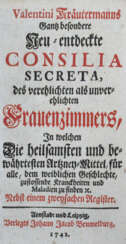mutze




Ferdinand Schmutzer, a distinguished Austrian printmaker, photographer, and portrait painter, hailed from a rich artistic heritage in Vienna. With his great-grandfather, Jacob Matthias Schmutzer, having founded the esteemed "k.k. Kupferstecher-Academie," creativity ran deep in his family. Following in the footsteps of his grandfather and father, Ferdinand initially explored sculpture but later honed his skills in painting at the renowned Vienna Academy. A transformative study trip to the Netherlands sparked his fascination with etchings, inspired by the works of Rembrandt van Rijn. Soon, his exquisite portraits of Vienna's elite garnered widespread acclaim, with prominent figures like Sigmund Freud, Albert Einstein, Kaiser Franz Josef, the Vienna Philharmonic, and Karl Lueger posing for him.
Notably, Schmutzer's art transcended borders, as he exhibited internationally and received numerous awards and accolades. Pioneering the use of larger formats in etching, he pushed the boundaries of the art form, bringing innovation to the technique. Becoming a member of the Vienna Secession in 1901 and later a professor at the Academy of Fine Arts Vienna in 1908, Schmutzer's impact on the art world was undeniable. His legacy lives on, inspiring future generations of artists, and he remains an iconic figure in Austrian art history.


Ferdinand Schmutzer, a distinguished Austrian printmaker, photographer, and portrait painter, hailed from a rich artistic heritage in Vienna. With his great-grandfather, Jacob Matthias Schmutzer, having founded the esteemed "k.k. Kupferstecher-Academie," creativity ran deep in his family. Following in the footsteps of his grandfather and father, Ferdinand initially explored sculpture but later honed his skills in painting at the renowned Vienna Academy. A transformative study trip to the Netherlands sparked his fascination with etchings, inspired by the works of Rembrandt van Rijn. Soon, his exquisite portraits of Vienna's elite garnered widespread acclaim, with prominent figures like Sigmund Freud, Albert Einstein, Kaiser Franz Josef, the Vienna Philharmonic, and Karl Lueger posing for him.
Notably, Schmutzer's art transcended borders, as he exhibited internationally and received numerous awards and accolades. Pioneering the use of larger formats in etching, he pushed the boundaries of the art form, bringing innovation to the technique. Becoming a member of the Vienna Secession in 1901 and later a professor at the Academy of Fine Arts Vienna in 1908, Schmutzer's impact on the art world was undeniable. His legacy lives on, inspiring future generations of artists, and he remains an iconic figure in Austrian art history.


Ferdinand Schmutzer, a distinguished Austrian printmaker, photographer, and portrait painter, hailed from a rich artistic heritage in Vienna. With his great-grandfather, Jacob Matthias Schmutzer, having founded the esteemed "k.k. Kupferstecher-Academie," creativity ran deep in his family. Following in the footsteps of his grandfather and father, Ferdinand initially explored sculpture but later honed his skills in painting at the renowned Vienna Academy. A transformative study trip to the Netherlands sparked his fascination with etchings, inspired by the works of Rembrandt van Rijn. Soon, his exquisite portraits of Vienna's elite garnered widespread acclaim, with prominent figures like Sigmund Freud, Albert Einstein, Kaiser Franz Josef, the Vienna Philharmonic, and Karl Lueger posing for him.
Notably, Schmutzer's art transcended borders, as he exhibited internationally and received numerous awards and accolades. Pioneering the use of larger formats in etching, he pushed the boundaries of the art form, bringing innovation to the technique. Becoming a member of the Vienna Secession in 1901 and later a professor at the Academy of Fine Arts Vienna in 1908, Schmutzer's impact on the art world was undeniable. His legacy lives on, inspiring future generations of artists, and he remains an iconic figure in Austrian art history.


Ferdinand Schmutzer, a distinguished Austrian printmaker, photographer, and portrait painter, hailed from a rich artistic heritage in Vienna. With his great-grandfather, Jacob Matthias Schmutzer, having founded the esteemed "k.k. Kupferstecher-Academie," creativity ran deep in his family. Following in the footsteps of his grandfather and father, Ferdinand initially explored sculpture but later honed his skills in painting at the renowned Vienna Academy. A transformative study trip to the Netherlands sparked his fascination with etchings, inspired by the works of Rembrandt van Rijn. Soon, his exquisite portraits of Vienna's elite garnered widespread acclaim, with prominent figures like Sigmund Freud, Albert Einstein, Kaiser Franz Josef, the Vienna Philharmonic, and Karl Lueger posing for him.
Notably, Schmutzer's art transcended borders, as he exhibited internationally and received numerous awards and accolades. Pioneering the use of larger formats in etching, he pushed the boundaries of the art form, bringing innovation to the technique. Becoming a member of the Vienna Secession in 1901 and later a professor at the Academy of Fine Arts Vienna in 1908, Schmutzer's impact on the art world was undeniable. His legacy lives on, inspiring future generations of artists, and he remains an iconic figure in Austrian art history.




Maurice Denis, a French painter and writer, was an influential figure in the transition from impressionism to modern art. Born on November 25, 1870, in Granville, France, Denis's artistic journey began at the Académie Julian in Paris. Here, he met future collaborators like Paul Sérusier and Pierre Bonnard, with whom he later formed the Nabis group, a collective deriving its name from the Hebrew word "Nabi," meaning "Prophet".
Denis's style evolved from neoimpressionism, influenced by artists like Seurat, to a more decorative and colorful approach under the influence of Gauguin. This shift is evident in works like "Taches du soleil sur la terrace" (1890). He famously stated, "Art is no longer a visual sensation... it is a creation of our spirit," highlighting his belief in art as an idealistic expression, transcending mere imitation of nature.
Denis was also impacted by Japanese art, which influenced his compositions and styles, contributing to his unique and recognizable approach. His philosophy on art, encapsulated in his 1890 essay published in "Art et Critique," emphasized the importance of color and form in creating emotional depth, a notion that laid the groundwork for modernism. He argued that a painting's essence lies in its colors and composition, rather than its subject matter.
Throughout his career, Denis's work evolved towards a more classical approach. His involvement with the Ateliers d'Art Sacré, founded in 1919, demonstrated his interest in religious art and decoration. His notable works include "The Legend of Saint Hubert" (1897) and "The History of Music" for the Théâtre des Champs Elysées (1912-1913).
Tragically, Maurice Denis's life ended on November 13, 1943, when he was struck by a truck during the German occupation of Paris. However, his legacy endures through his contributions to modern art and symbolism, his influence on fellow artists, and his works displayed in various museums and galleries.
For collectors and art experts, Denis's work offers a unique glimpse into the evolution of modern art. His blend of symbolism, color, and form marks a significant shift in art history. To stay updated on new sales and auction events related to Maurice Denis's work, sign up for our newsletter. This subscription will keep you informed about the latest developments in the world of this remarkable artist.














































































